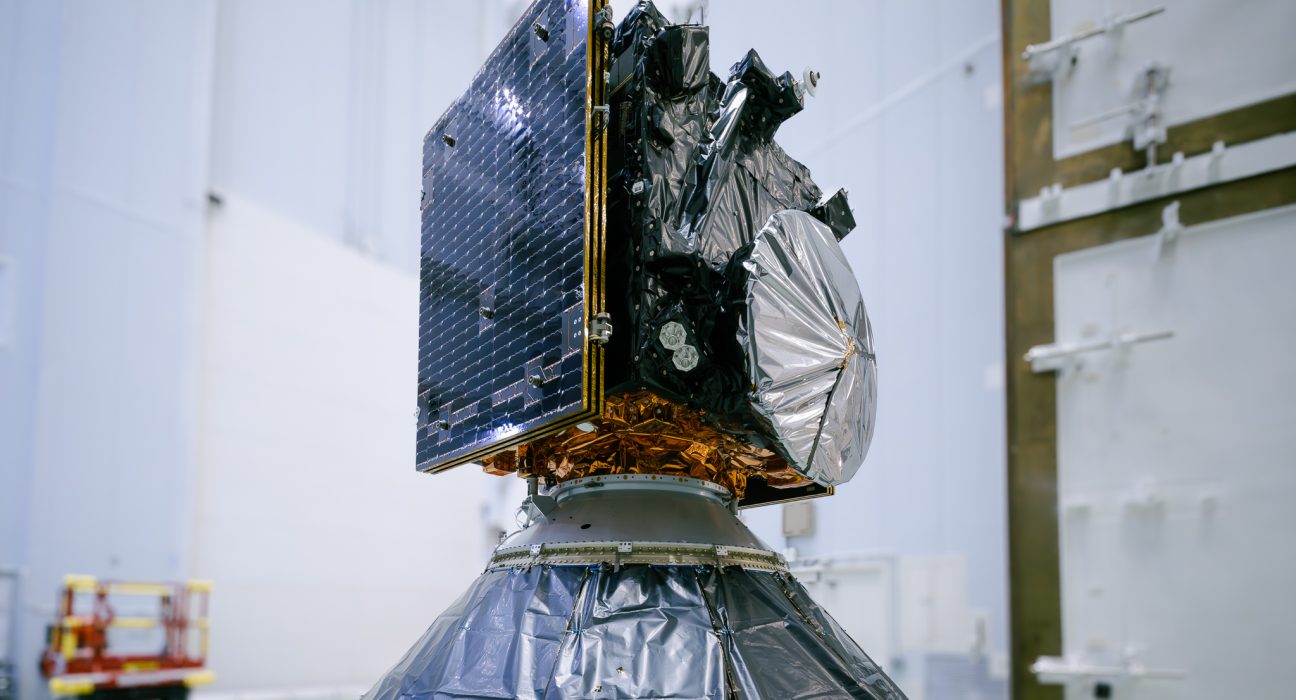Two years ago, NASA's Double Asteroid Redirection Test (DART) mission intentionally collided with the asteroid moon Dimorphos at 15,000 mph (6.6 km/s). Now, a new mission is heading to the site of the collision to show us a detailed view of its consequences.
A SpaceX Falcon 9 rocket lifted off from Cape Canaveral Space Force Station in Florida on October 7 at 16:52 UT / 10:52 am EDT with the European Space Agency. Hera Mission. The launch marks one of the first collaborations between NASA, ESA and SpaceX. (SpaceX also launched the ESA satellite Euclid Space Telescope last year.)
SpaceX
Takeoff and climb were nominal. Hera was successfully deployed from the Falcon 9 upper stage booster 1 hour and 53 minutes after launch, and from ESA's Estrack ground stations. signals captured from Hera three minutes later. Solar panels have also been successfully installed.
ESA intends to use Hera to better understand the experimental DART collision and ultimately turn it into a planetary defense technique.
ESA/Scientific Office
Now, Hera will head to asteroid 65803 Didymos and its small moon Dimorphos. On its way there, the spacecraft will pass by Mars in March 2025, taking the opportunity to test its instruments on the small Martian moon Deimos.
ESA Scientific Office
Hera will arrive at Didymos on December 14, 2026, enter orbit around the binary pair and examine the impact crater on Dimorphos created by the DART impact. He Hubble space telescope We saw the tail of debris generated by the DART impact, giving us just an indication of the immense changes that took place on the moon's surface. The Hera mission will also aim to understand changes in the mutual orbit of asteroids, refining measurements made from the ground and from Earth orbit.
NASA / ESA / D. Jewitt / UCLA
Both the DART and Hera missions were born as proposals for a program called Asteroid Impact and Deflection Assessment, a joint effort between the United States and Europe that began more than a decade ago. Once approved, Hera moved from design and development to completion for launch in just four years. Hera carries a suite of instruments, including two cameras, a hyperspectral imager, an infrared imager provided by the Japanese space agency JAXA, and an altimeter. The spacecraft also includes an X-Band radio science experiment, which will use radio waves to measure the asteroids' rotation speed and their slight gravitational pull.
Two CubeSats, called Juventas and Milani, also travel to Hera. These will be deployed after Hera arrives in the system, making observations to complement those of the spacecraft. If all goes according to plan, Juventas and Milani will eventually soft-land on the Dimorphos moon; Hera will end her days on the surface of the larger Didymos.
THAT
This event was the 23rd and final launch of the Falcon 9 first stage B1061. Falcon 9 needed all of its fuel to send Hera into orbit and head to Didymos, so there was no fuel left for a recovery and reuse landing.
Problems with the Falcon 9 second stage in September caused planners to worry that the launches of Hera and Europe Clipper (launch on a Falcon Heavy) could fail, but that didn't happen. This launch was the first flight of the Falcon 9 after the anomaly. However, the Europa Clipper's liftoff has not been delayed until October 12, as Hurricane Milton will target central Florida and the Kennedy Space Center this week. Fortunately, Hera was able to leave Earth before the hurricane began to impact the Space Coast region.
The mission's ambition to study asteroid impacts is a worthy ambition, should we ever have to move a terrestrial asteroid out of the way. DART and Hera together represent an excellent example of international cooperation in the name of planetary defense.
